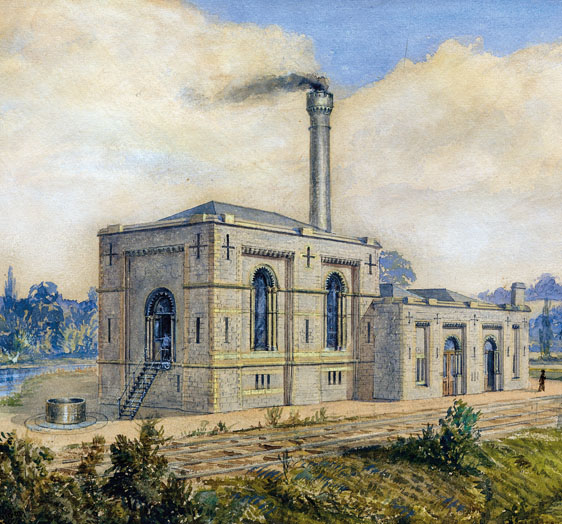Community researcher – Michele Shoebridge
The Weare Cliff is a small area of exposed river cliff made from a cutting in the construction of Bonhay Road. It is primarily Sandstone and Mudstone and part of a geological strata, which runs from the Bristol Channel across Devon to Germany. Growing into the cliff are protected flora and fauna. Fossils in the rock date the strata to 320 million years ago and it was originally on the sea floor.
Situated below the cliffs was the Water Engine. Water had long been drawn from the Exe and delivered by carriers, but with the growth in population at the end of the seventeenth century, a better water supply was required. A water company was set up in 1693 and an engine (a large water wheel attached to a pump) installed.
The engine house was at the corner of Exe Street and Bonhay Road taking power from a leat fed from the Head Weir.
Head Weir. Water was pumped up to a lead lined holding tank ‘Back Grate’ at the rear of the Guild Hall which held 600 hogsheads from where it was distributed around the city. In need of modernization, James Golsworthy bought the water company in 1822 and installed a more powerful pump and new metal pipes to reduce leakages but correspondence in local newspapers continued to highlight the lack of water for domestic use and the prohibitive cost.
The Corporation seemed incapable of resolving the situation and nothing was done until an acute outbreak of cholera hit the city in 1832. The following year the Exeter Water Company was established, new works set up at Pynes Hill and a reservoir created at Danes Castle. The original engine house was converted to a grist mill and the Guildhall cistern became redundant.
